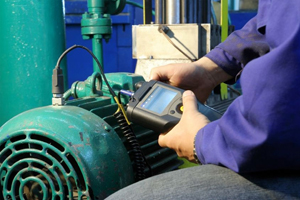Cranes are heavy-duty vehicles, such as other lifting and transporting vehicles, and must be kept under constant control in terms of operating conditions. Unfortunately, unwanted accidents are experienced due to the fact that cranes and their accessories are sometimes misused and have not been regularly maintained.
Maintenance of the cranes at the desired periods is a necessary application in terms of protecting the employees and not to incur unnecessary costs of the workplace. Hooks and ropes, which are the most critical parts of the cranes, should also be inspected daily.
According to the provisions of the Occupational Health and Safety Act No. 6331, it is a legal obligation to carry out regular checks against a possible accident risk. In the case of an unwanted situation, whether or not regular checks of the crane are made is the first point to be looked at. Otherwise, the owner of this crane will be held liable.
Random inspection and test facilities, with expert employees crane controls and the fact that both the cranes and their auxiliary equipment perform safely the lifting function and report their outstanding deficiencies and dangerous situations. In this way, defects can be detected in a timely manner and measures can be taken for situations that would endanger safety or cause great economic losses.
The inspection and test institutions shall review the previous report of the machine, if any, before the crane inspection, and if the non-conformity is detected in the previous examination, it is checked whether this non-conformity is resolved. In addition, it is checked whether the crane operator is authorized to use the crane. Then the technical specifications of the crane begin to control. Rail towers for rail towers, crane drum and rope, hook and tower cranes are controlled by cabin and booth. Dynamic and static load checks are performed. Function checks are performed at the end with no load.
In the Regulation on Health and Safety Conditions in the Use of Work Equipment, issued by the Ministry of Labor and Social Security, the control periods according to the types of machines, the criteria to be taken into consideration during the periodic checks and related standards are explained. Accordingly, the cranes must be inspected at least once a year if no other period of time is required by the relevant standards. The main standards considered during the controls are:
- TS 10116 Lifting and conveying machines - Cranes - Inspection and test methods
- Steel wire ropes - Safety - Section 12385: Operation and maintenance information
- TS EN 13157 + A1 Cranes - Safety - Hand-driven lifting equipment
- TS ISO 4309 Cranes - Wire ropes - Application rules for inspection and decommissioning
- TS ISO 12480-1 Cranes - Safe use - Section 1: General
TÜRCERT certification body provides certification and training services as well as specific technical services to companies in need. In this context, you can rely on the TÜRCERT certification body, which has an experienced and expert staff in regular inspection of cranes and other inspection services.


